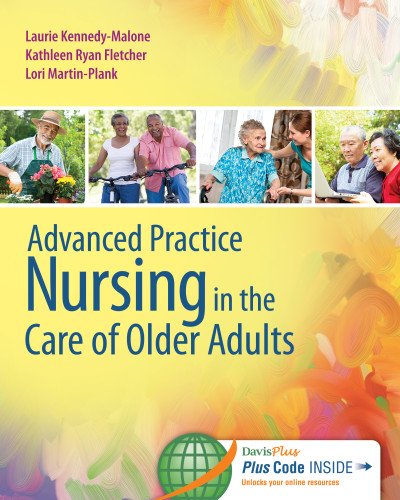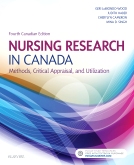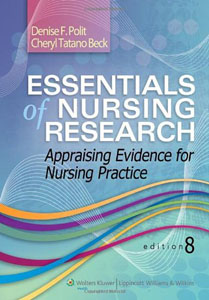Description
Test Bank For Advanced Practice Nursing in the Care of Older Adults 1st Edition By BY KENNEDY AND FLETCHER
Table of Contents
I. The Healthy Older Adult
1. Changes With Aging
2. Health Promotion
3. Exercise in Older Adults
II. Assessment
4. Comprehensive Geriatric Assessment
5. Symptoms and Syndromes
III. Treating Disorders
6. Skin and Lymphatic Disorders
7. Head, Neck and Face Disorders
8. Chest Disorders
9. Peripheral Vascular Disorders
10. Abdominal Disorders
11. Urological and Gynecologic Disorders
12. Musculoskeletal Disorders
13. Central and Peripheral Nervous System Disorders
14. Endocrine, Metabolic, and Nutritional Disorders
15. Hematological and Immune System Disorders
16. Psychological Disorders
IV. Complex Illness
17. Nutritional Support in the Older Adult
18. Chronic Illness and the Advanced Practice Registered Nurse (APRN)
19. Palliative Care and End of Life Care
Chapter 2: Health Promotion
Multiple Choice
Identify the choice that best completes the statement or answers the question.
____ 1. The leading cause of death in elderly travelers worldwide is:
|
A. |
Cardiovascular disease |
|
B. |
Infections |
|
C. |
Accidents |
|
D. |
Malaria |
____ 2. Which of the following should be avoided in countries where food and water precautions are to be observed?
|
A. |
Hot coffee |
|
B. |
Bottled water |
|
C. |
Salad buffet |
|
D. |
Unpeeled bananas |
____ 3. What insect precautions are not necessary to prevent insect-borne diseases in the tropics?
|
A. |
Using 100% DEET on skin to prevent bites |
|
B. |
Treating clothes with permetherin |
|
C. |
Covering up exposed skin to lessen biting surface |
|
D. |
Taking malaria pills as directed for areas at risk for malaria |
____ 4. An example of secondary prevention you could recommend/order for older adults would be to:
|
A. |
Check for fecal occult blood |
|
B. |
Wear seat belts in the car |
|
C. |
Provide foot care for a diabetic patient |
|
D. |
Administer a tetanus shot |
____ 5. Ali is a 72-year-old man who recently came to the U.S. from Nigeria. He reports having BCG (bacille Calmette-Guerin) vaccination as a child. Which of the following is correct regarding a tuberculin skin test?
|
A. |
It should not be done at all. |
|
B. |
It should be read as smaller than it really is. |
|
C. |
Vaccination history is irrelevant; read as usual. |
|
D. |
It should be read as larger than it really is. |
____ 6. A 72-year-old woman and her husband are on a cross-country driving vacation. After a long day of driving, they stop for dinner. Midway through the meal, the woman becomes very short of breath, with chest pain and a feeling of panic. Which of the following problems is most likely?
|
A. |
Pulmonary edema |
|
B. |
Heart failure |
|
C. |
Pulmonary embolism |
|
D. |
Pneumonia |
____ 7. Ivan W. is a 65-year-old man who is new to your practice. He has a history of COPD, CAD, hypertension, and type 2 diabetes mellitus. He has had no immunizations since his discharge from the military at age 25. Childhood diseases included chickenpox, measles, mumps, and “German measles.” He presents for a disease management visit. Which of the following immunizations would you recommend for Ivan?
|
A. |
MMR, influenza, pneumococcal, Zostavax |
|
B. |
Influenza, pneumococcal, PPD, Hepatitis B |
|
C. |
Tdap, pneumococcal, influenza, Zostavax |
|
D. |
Hepatitis B, influenza, pneumococcal, Hepatitis A |
____ 8. Leo L. is a 62-year-old African American male who comes for an initial visit to your practice. Personal health history includes smoking 1 pack/day since age 11, consuming a case of beer (24 bottles) every weekend, and working as an assembler (sedentary job) for the past 10 years. Family history in first-degree relatives includes hypertension, high cholesterol, heart attack, and type 2 diabetes mellitus. Leo’s BMI is 32; BP today is 130/86. You order a fasting glucose, lipid profile, and return visit for BP check. This is an example of:
|
A. |
Primary prevention |
|
B. |
Secondary prevention |
|
C. |
Tertiary prevention |
|
D. |
Health profiling |
____ 9. A local chapter of a nurse practitioner organization has begun planning a community-based screening for hypertension at a local congregate living facility. This population was selected on the basis of:
|
A. |
A predicted decreased incidence of high blood pressure in this population |
|
B. |
A recognized element of high risk within this group |
|
C. |
Readily available treatment measures |
|
D. |
Achieving an administrative goal for the congregate living facility |
____ 10. Performing range of motion exercises on a client who has had a stroke is an example of which level of prevention?
|
A. |
Primary prevention |
|
B. |
Tertiary prevention |
|
C. |
Secondary prevention |
|
D. |
Rehabilitation prevention |
____ 11. The nurse practitioner demonstrates an understanding of primary prevention of falling among the elderly through which management plan?
|
A. |
Evaluate a need for assistive devices for ambulation after the client has been injured from a fall. |
|
B. |
Provide resources to correct hazards contributing to falls in the home environment. |
|
C. |
Reinforce the need to use prescribed eyeglasses to prevent further injury from falls. |
|
D. |
Provide information about medications, side effects, and interactions. |
____ 12. An example of an active strategy of health promotion for an individual to accomplish would be:
|
A. |
Maintaining clean water in the local environment |
|
B. |
Introducing fluoride into the water |
|
C. |
Beginning a stress management program |
|
D. |
Maintaining a sanitary sewage system |
____ 13. You are working with an older male adult with a long history of alcohol abuse and a 30-year history of smoking. In recommending an intervention for this client, your responsibility is to:
|
A. |
Make the individual abandon his own health practices and follow your recommendations |
|
B. |
Register the patient for a local intervention program and secure payments |
|
C. |
Promote positive change in lifestyle choices |
|
D. |
Identify the barriers that the client will encounter |
____ 14. The four main domains of clinical preventive services that the practitioner will provide are:
|
A. |
Counseling interventions, screening tests, immunizations, and chemoprophylaxis |
|
B. |
Counseling intervention, screening tests, immunizations, and education |
|
C. |
Counseling interventions, transportation, screening tests, and immunizations |
|
D. |
Screening tests, brief psychotherapy, immunizations, and chemoprophylaxis |
____ 15. Which organism that can be prevented by immunization is most often responsible for an infectious “outbreak” in the nursing home setting?
|
A. |
Haemophilus influenza |
|
B. |
Streptococcus |
|
C. |
Influenza A |
|
D. |
Mycobacterium tuberculosis |
____ 16. What is the appropriate method for tuberculosis screening of an older adult entering a nursing home?
|
A. |
5 tuberculin units intramuscular PPD injection and if negative repeat with same dose one week later |
|
B. |
5 tuberculin units intradermal PPD injection and if negative repeat with same dose one week later |
|
C. |
Chest x-ray at the same time of PPD testing |
|
D. |
5 tuberculin units intradermal PPD injection and if positive repeat same dose in one week |
Chapter 2: Health Promotion
Answer Section
MULTIPLE CHOICE
1.ANS:CPTS:1
2.ANS:CPTS:1
3.ANS:APTS:1
4.ANS:APTS:1
5.ANS:CPTS:1
6.ANS:CPTS:1
7.ANS:CPTS:1
8.ANS:BPTS:1
9.ANS:BPTS:1
10.ANS:BPTS:1
11.ANS:DPTS:1
12.ANS:CPTS:1
13.ANS:CPTS:1
14.ANS:APTS:1
15.ANS:CPTS:1
16.ANS:BPTS:1





Be the first to review “Test Bank Advanced Practice Nursing in the Care of Older Adults 1st Edition By BY KENNEDY AND FLETCHER”